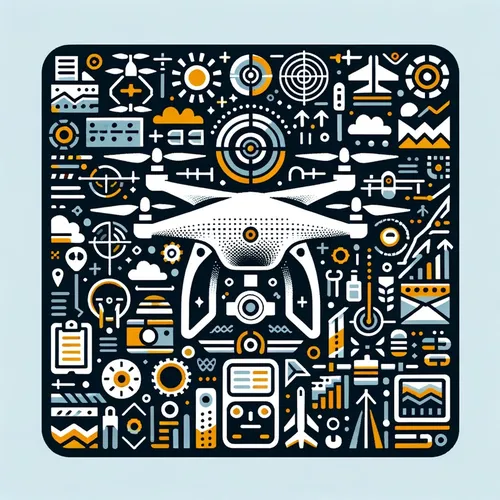Drones Soar, FAA Tightens Grip: Mastering the Skies in 2025's Wild West of Unmanned Flight
- Author
- Quiet. Please
- Published
- Wed 16 Jul 2025
- Episode Link
- https://www.spreaker.com/episode/drones-soar-faa-tightens-grip-mastering-the-skies-in-2025-s-wild-west-of-unmanned-flight--66994089
This is you Professional Drone Pilot: Flight Tips & Industry Updates podcast.
The commercial drone industry is entering a transformative phase, with major changes underway in technology, regulation, and business practices. Market growth is robust: Grand View Research estimates the global commercial drone sector was valued at 30 billion dollars in 2024 and projects it will expand to as much as 60 billion dollars annually by 2030, buoyed by surging demand in construction, utilities, agriculture, and logistics. Businesses now routinely turn to drone-as-a-service providers rather than maintaining their own fleets, leveraging increasingly advanced features like automated mapping, real-time data analysis powered by artificial intelligence, and enhanced hardware such as thermal and multispectral sensors.
For professional drone operators, mastering advanced flight techniques remains crucial. With adoption of AI-assisted flight control and fully autonomous drones escalating rapidly, operators should devote time to learning updated flight planning systems that support beyond visual line of sight missions. Weather awareness is more important than ever; integrating live weather data and predictive analytics into preflight planning can help mitigate risks, especially when using heavier or more advanced payloads. Regular equipment optimization—like updating firmware, calibrating sensors, checking battery health, and thorough preflight checks—directly translates into safer and more lucrative operations.
Certification remains a cornerstone for commercial pilots. The Federal Aviation Administration still requires passage of its Part 107 exam, and pilots must now complete online recurrent training every two years. Internationally, regulatory frameworks are evolving, with new guidance for urban operations and close proximity flights. Notably, 2025 has seen governments, including in the United States, investing heavily in rules to enable beyond visual line of sight flights, clearing the path for drone delivery and extended infrastructure inspection routes. This regulatory shift makes it critical for operators to stay current on licensing requirements, insurance policies, and liability waivers.
Industry news this week includes several significant developments: Major drone delivery trials are underway in the Midwest United States, with state authorities granting special waivers for medical supply transit routes. In Europe, a leading energy conglomerate signed a multi-year contract with a drone inspection service provider, citing the need for faster and safer infrastructure audits. Meanwhile, the Federal Aviation Administration announced an upcoming update to the Remote Identification mandate, tightening requirements for compliance by Autumn.
Client expectations are shifting, especially as businesses recognize the strategic value of drone data. Operators who articulate their pricing transparently, highlight their certification credentials, and maintain open channels for project feedback can consistently outperform competitors. Looking ahead, the future favors those who upskill in data analytics and embrace autonomous systems. Your practical takeaway for this week: invest in recurrent training, stay engaged with equipment maintenance schedules, and if you have not already, explore niche service offerings like thermal mapping or live multispectral crop analysis.
Thank you for tuning in, and be sure to check back next week for more insights. This has been a Quiet Please production, and for more, visit QuietPlease Dot A I.
For more http://www.quietplease.ai
Get the best deals https://amzn.to/3ODvOta
